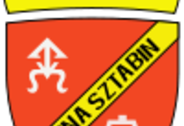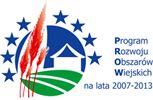Sztabin

The territory of the present Gmina Sztabin was once inhabited by Yotvingians. In 1506, King Alexander Jagiellon gave a part of this area to the Chreptowicz family, who named the local settlement Osinki. In 1760 Joachim Chreptowicz, a Grand Chancellor of Lithuania, marked out a triangular market and a network of streets, and changed the name of the settlement into Sztabin. Soon it became the main trade centre of the Krasnybór estate and began to gain more urban style. In 1766, Sztabin obtained a royal charter for markets and fairs.
The village is known mainly for social and economic experiments of Count Karol Brzostowski. In the twenties of the 19th century he created the so-called Republic of Sztabin. He freed peasants from serfdom, established a school and introduced compulsory free education in his estate, modernised agriculture, built a hospital, introduced a criminal code, founded a savings and loan bank. He also built a glassworks, brickyard, sawmill, iron products factory and a harbour on the Biebrza. The residents of Sztabin actively participated in the uprisings and subsequent wars, paying the highest price.
Diverse cultural heritage intermingles here with natural and culinary heritage. A large part of the gmina lies on the territory of high natural and scenic values: the area of the Biebrza National Park, Augustów Canal with the locks in Sosnowo and Dębowo, a village and rural museum of Jagłowo, large forest complexes with the nature reserves of Glinki and Kozi Rynek. More and more tourists visit this area, especially those who love peace and quiet, being close to unique, wild nature and willing to learn about the curious history of this region.
The Biebrza swamps – once a problem for local farmers, today recognised as a unique area in Europe and a real reason to be proud of. An additional asset is the immediate vicinity of the Augustów Primeval Forest. All in all, a paradise for tourists, historians and naturalists, especially because due to the closeness of the Biebrza and the location of agricultural farms in the buffer zone of the Biebrza National Park, the local products and dishes are made of the highest quality ingredients.
The village is known mainly for social and economic experiments of Count Karol Brzostowski. In the twenties of the 19th century he created the so-called Republic of Sztabin. He freed peasants from serfdom, established a school and introduced compulsory free education in his estate, modernised agriculture, built a hospital, introduced a criminal code, founded a savings and loan bank. He also built a glassworks, brickyard, sawmill, iron products factory and a harbour on the Biebrza. The residents of Sztabin actively participated in the uprisings and subsequent wars, paying the highest price.
Diverse cultural heritage intermingles here with natural and culinary heritage. A large part of the gmina lies on the territory of high natural and scenic values: the area of the Biebrza National Park, Augustów Canal with the locks in Sosnowo and Dębowo, a village and rural museum of Jagłowo, large forest complexes with the nature reserves of Glinki and Kozi Rynek. More and more tourists visit this area, especially those who love peace and quiet, being close to unique, wild nature and willing to learn about the curious history of this region.
The Biebrza swamps – once a problem for local farmers, today recognised as a unique area in Europe and a real reason to be proud of. An additional asset is the immediate vicinity of the Augustów Primeval Forest. All in all, a paradise for tourists, historians and naturalists, especially because due to the closeness of the Biebrza and the location of agricultural farms in the buffer zone of the Biebrza National Park, the local products and dishes are made of the highest quality ingredients.










